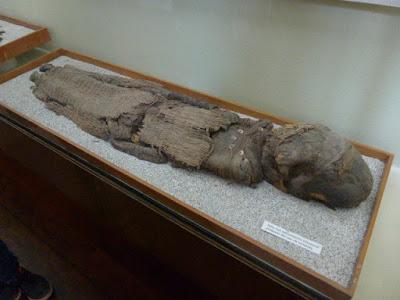Last week the very small pueblito of La Tirana - about 550 people live there - had their annual festival commemorating their Virgin del Carmen. Between 200,000-250,000 people travel there for the celebrations throughout the week. They have groups of dancers, lots of food is sold, they sleep in tents/sleeping bags, etc. That area is very warm during the day and quite cold at night - typical desert weather in the wintertime. While we didn't go there, we did find these lights at a roundabout in Iquique and wanted to share them.
CHURCH DISTRICT ACTIVITY
The building we meet in has been repaired from all the earthquake damage and we're meeting in it again while the other building is now being renovated. Our district had an Open House last Friday and invited all the members and their friends. It's a bigger building than the other one so we had plenty of room for everyone. The missionaries had been asked to provide the games and they did a terrific job!
The members, friends, and investigators all enjoyed themselves!
The cultural hall is quite small so they always turn the chairs around in the chapel and have their activities with the audience sitting in the chapel. It works out very nicely!
At the end they served sopapillas with a semi-spicy salsa and hot chocolate. Yum! Elders Cable/CA and Rodriguez/Mexico were busy handing out the drinks. The sister in the red poncho is Andrea Aguirre from Tarapacá branch. The sister in the blue hat is Nidia from Las Américas branch.
Little Joao (John/Juan in Portuguese) Lopez from our branch, Tarapacá, had fun going down the ramp on his little bike.
THE REGIONAL MUSEUM AT IQUIQUE
At the Regional Museum at Iquique we enjoyed learning about the people who lived in this area thousands of years ago. They're Amayaran in descent and one of the things they did was when someone died they mummified them - all people, not just the royalties. With this being the driest desert in the world, they've been able to dig up hundreds of mummies with many, many more still in the ground. The oldest they've been able to find have been between 6,000-5,000 BC.
This one is a mother with her baby.
Tools used to deform their skulls and some deformed skulls. We have no idea why they did this - for style?
Various hats used by the Amayaran people in ancient times.
















No comments:
Post a Comment